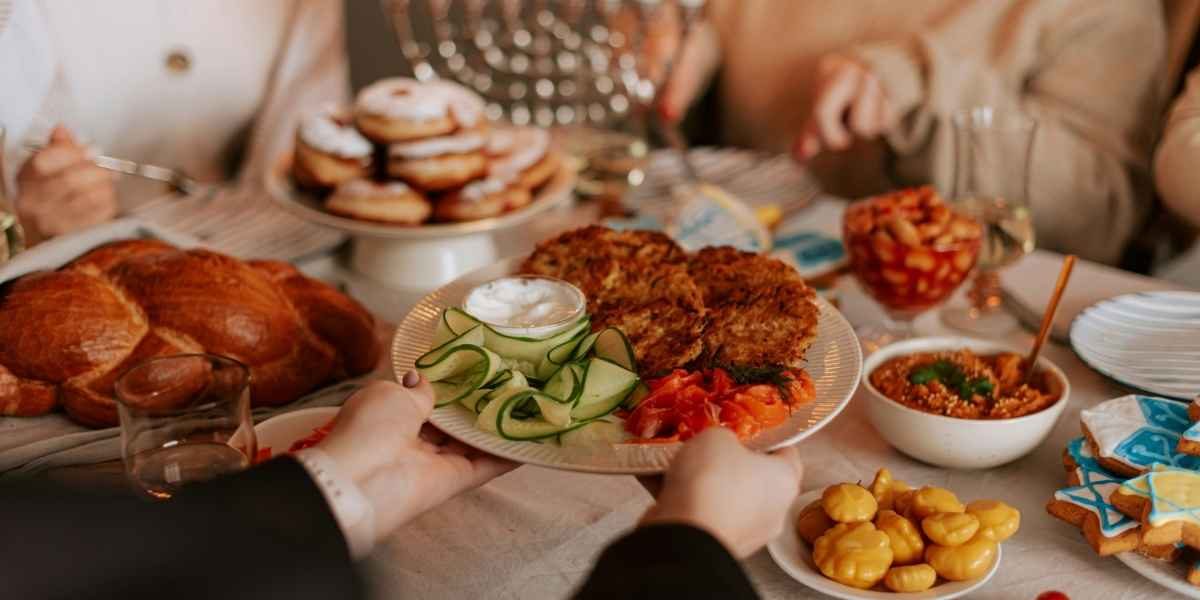Every year, as Hanukkah approaches, a friendly yet passionate debate resurfaces: Which is the superior Hanukkah treat—latkes or sufganiyot? This question has sparked lively discussions at dinner tables, family gatherings, and even online forums. Both of these iconic fried foods hold deep cultural and historical significance, symbolizing the miracle of the oil that burned for eight days. While some insist that the crispy, savory bite of a latke embodies tradition, others argue that the sugary, jelly-filled delight of a sufganiyah is the true highlight of the holiday.
Read Also: Weight Loss for Men Over 40: A Sustainable Guide
What Makes Latkes a Hanukkah Staple?
Latkes, or potato pancakes, are a classic Hanukkah dish with roots in Eastern European Jewish cuisine. These crispy, golden-brown delights are made from grated potatoes, onions, eggs, and a touch of flour or matzo meal before being fried in oil. Their savory flavor and crispy texture have made them a beloved comfort food across generations.
Beyond their taste, latkes hold deep symbolic value. They represent the oil that miraculously lasted eight nights in the Holy Temple, reinforcing the tradition of frying foods during Hanukkah. Historically, Jewish communities in Eastern Europe relied on potatoes as a staple ingredient, making latkes an affordable and practical dish to prepare.
The versatility of latkes is another reason for their enduring popularity. Some enjoy them with sour cream, while others prefer the sweet contrast of applesauce. Over time, modern adaptations have emerged, with variations featuring sweet potatoes, zucchini, and even cheese. Whether made in the traditional style or given a contemporary twist, latkes remain a defining dish of the Hanukkah celebration.
Why Do Sufganiyot Capture the Spirit of Hanukkah?
For those with a sweet tooth, sufganiyot reign supreme. These deep-fried jelly-filled doughnuts are a Hanukkah favorite, especially in Israeli and Sephardic traditions. Unlike latkes, which are primarily associated with Ashkenazi Jewish communities, sufganiyot trace their origins to North African and Middle Eastern Jewish cuisine, evolving from medieval Sephardic pastries known as “bimuelos” or “sfenj.”
Soft, airy, and dusted with powdered sugar, sufganiyot are filled with fruit preserves, custard, chocolate, or other decadent fillings. Their pillowy texture and sweet explosion of flavor make them a festive indulgence, often prepared in bakeries weeks before Hanukkah begins.
In Israel, sufganiyot are a central feature of the Hanukkah season, with bakeries producing endless varieties, from classic strawberry jam-filled versions to gourmet creations with caramel, Nutella, and even pistachio cream. The modern take on these treats has only deepened their appeal, making them a symbol of Hanukkah joy and culinary innovation.
Which Hanukkah Treat Has a Greater Cultural Impact?
Latkes and sufganiyot are more than just food—they are cultural icons. Their significance extends beyond taste and preference, representing regional influences and Jewish migration patterns.
In Ashkenazi households, latkes have been the centerpiece of Hanukkah celebrations for centuries. The simple yet satisfying combination of potatoes and onions, fried to perfection, reflects the resourcefulness of Jewish communities in Eastern Europe. Even today, family recipes are passed down through generations, ensuring that the tradition remains alive.
Sufganiyot, on the other hand, have evolved into a symbol of Hanukkah festivities in Israel and Sephardic communities worldwide. In Tel Aviv and Jerusalem, bakeries sell millions of sufganiyot each season, demonstrating their immense popularity. Their presence in holiday celebrations connects Jewish traditions from different regions, merging ancient Sephardic customs with modern Israeli culture.
Both foods serve as a reminder of Jewish resilience, adaptation, and culinary creativity. While latkes connect families to their Eastern European roots, sufganiyot reflect the influence of Sephardic and Middle Eastern traditions in shaping modern Jewish cuisine.
Which One Wins the Hanukkah Debate?
Choosing between latkes and sufganiyot is a matter of personal taste and tradition. Some people crave the savory crispiness of a well-fried latke, while others eagerly anticipate the sugary delight of a warm sufganiyah. The debate often comes down to whether one prefers a hearty, crispy potato dish or a sweet, pillowy doughnut.
Ultimately, why choose just one? Many families embrace both, serving latkes as a main dish and sufganiyot as a dessert. The spirit of Hanukkah is about joy, family, and celebrating traditions—whether through crispy latkes or sugary sufganiyot, there’s always room for both on the table.
Published by Drake M.





